A DSLR is a digital single-lens reflex camera or digital SLR. Learn the benefits and drawbacks of the popular digital camera.
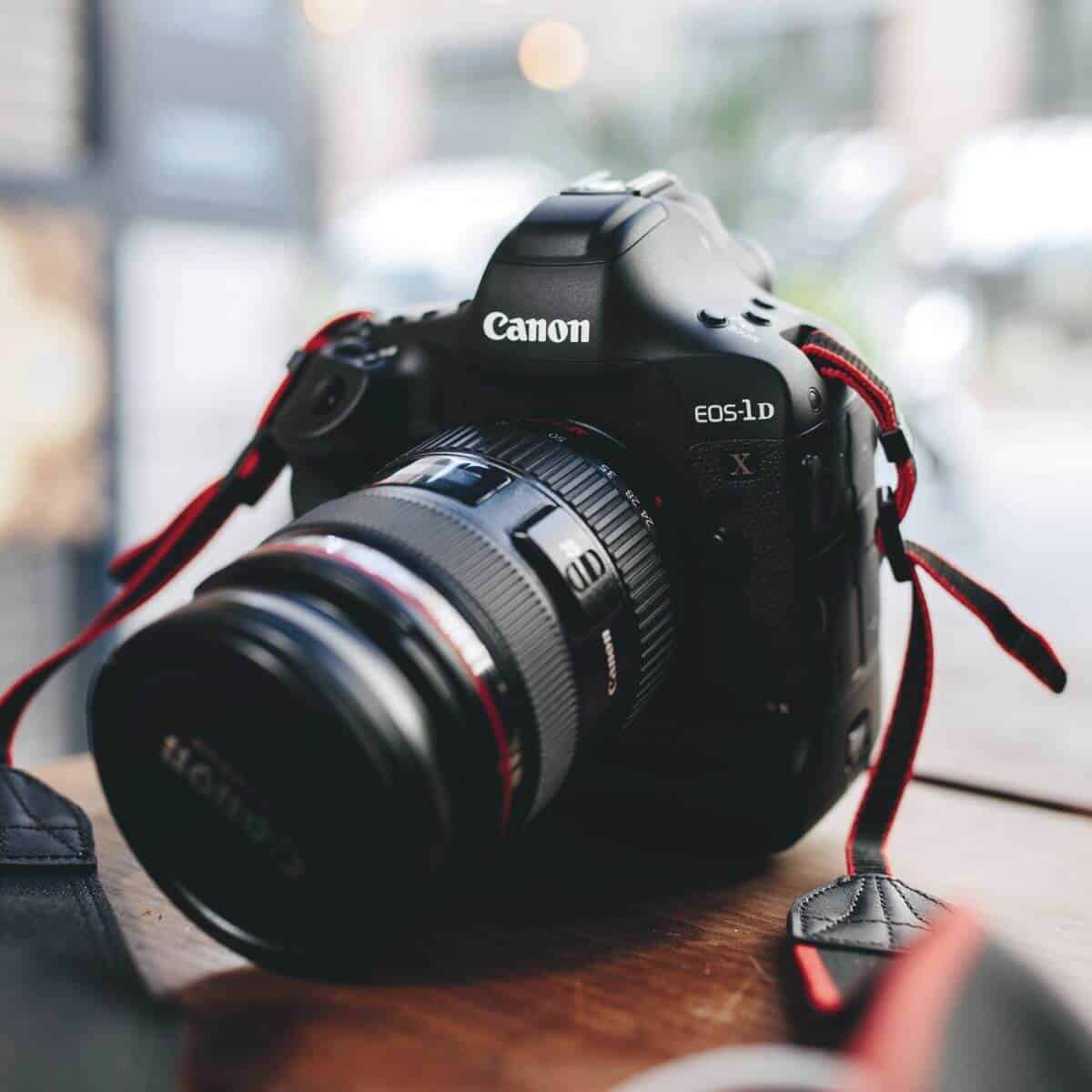
DSLR is an acronym for digital single-lens reflex. It uses a mirror, prism, and digital image sensor to capture excellent photos.
It’s known for photo quality, autofocus, and fast performance.
The first DSLR was the D1 by Nikon in 1999. Today, many brands offer high-quality DSLR cameras.
The following is your complete guide to understanding DSLR cameras and how they work.
What’s a DSLR camera?

The DSLR camera was the spark for the shift into digital photography.
Its notable features include interchangeable lenses and a digital image sensor.
You can also use the viewfinder or LCD screen to see the photo before pressing the shutter button.
DSLR cameras take the place of SLR cameras. But it maintains the optics and mechanisms.
Whether you’re a beginner or a professional, there’s a DSLR that’ll meet your needs.
How a DSLR camera works
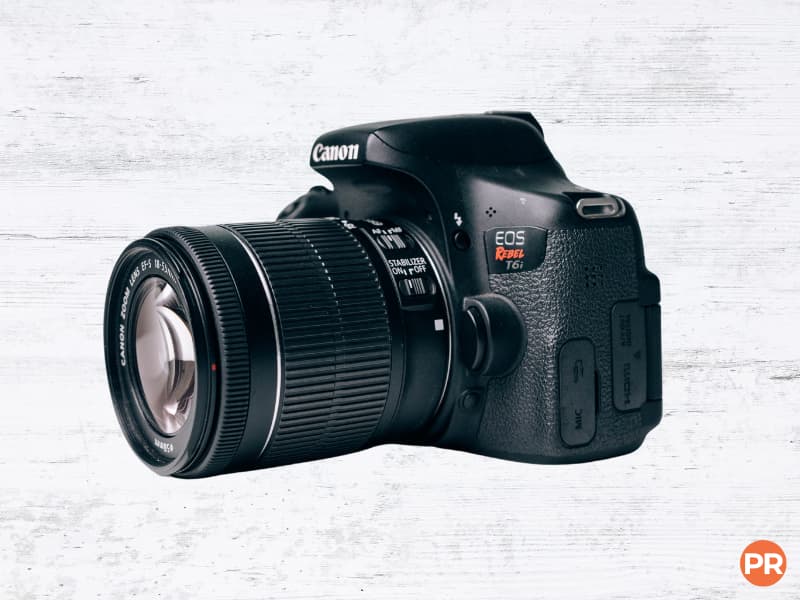
A digital SLR camera has a mirror or prism that reflects light into the optical viewfinder.
It allows you to see the image before taking the picture.
When you press the shutter button, the mirror flips out of the way, and light reaches the image sensor.
Then, the photo goes into storage on the SD card.
Like other digital cameras, you can choose between several shooting modes.
A DSLR camera offers automatic, program, aperture-priority, shutter-priority, and manual modes.
You can also change the lens to use different apertures and focal lengths.
Types of digital SLR image sensors
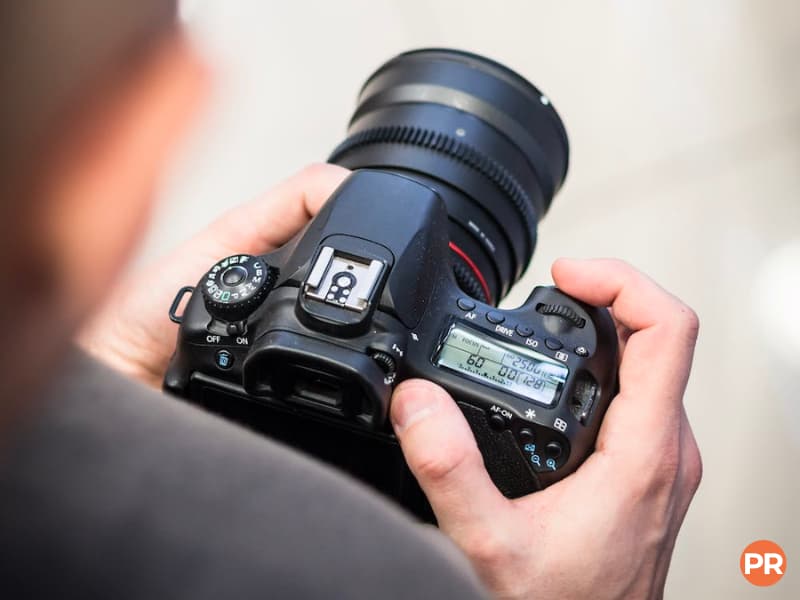
An image sensor is a rectangular part of the camera that reads and records the photo.
Larger sensors increase the quality and details in a picture. The larger the sensor, the more light it can capture.
Full-frame and APS-C or crop sensors are the two image sensor types for DSLR cameras.
A full-frame sensor is the digital version of the 35mm film format (24mm x 36mm).
An APS-C sensor is smaller and crops the field of view.
The crop factor depends on the brand. It ranges from a crop factor of 1.5 to 2.
While a DSLR camera with an APS-C sensor is cheaper, full-frame sensors are better.
They offer a better dynamic range, low-light performance, and depth of field.
Benefits of digital SLR cameras
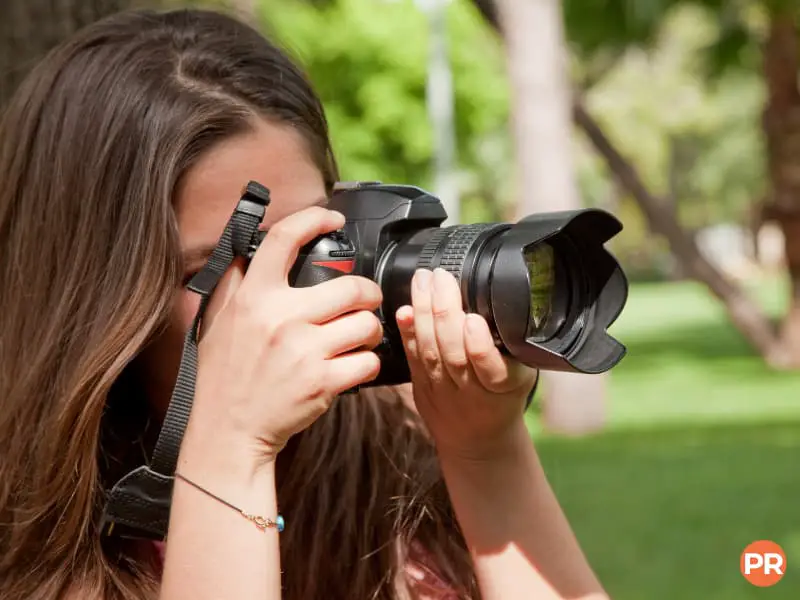
Advances in technology make digital SLR cameras better and better.
The benefits include interchangeable lenses, quick autofocus, and long battery life.
The ability to change your lens gives you many creative opportunities. You can do all types of photography.
Wide-angle, standard, or telephoto lenses are available with various apertures.
Lenses with wide apertures offer excellent low-light performance and bokeh.
Digital SLR cameras rely on the mirror or prism rather than an electronic viewfinder. It lengthens the battery life, making it ideal for long shoots.
Drawbacks of DSLR cameras
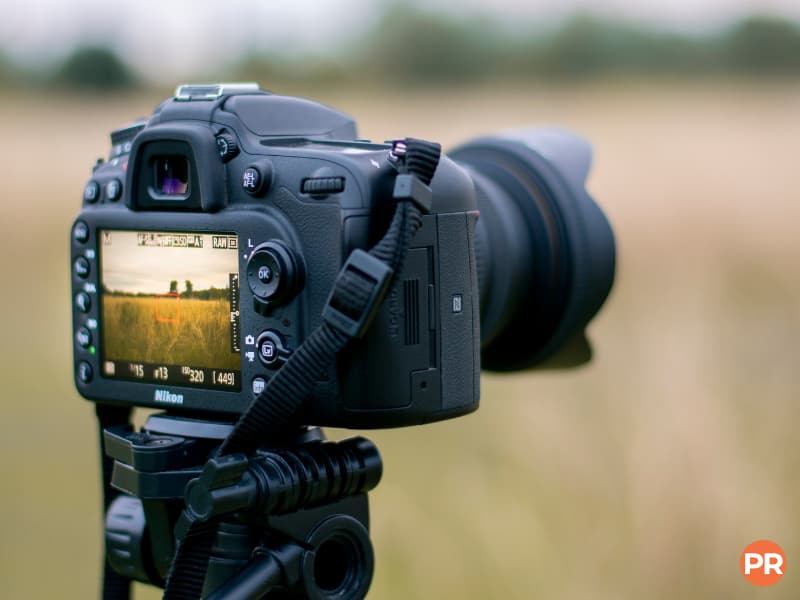
While digital SLR cameras have many benefits, there are also drawbacks.
The main disadvantages of DSLRs are size, weight, speed, sound, and accuracy.
When you compare them to mirrorless cameras, DSLRs are much larger and heavier.
The mirror or prism takes up more space, as the complex movements need more room. Carrying around a digital SLR can become tiring.
Sound is another drawback. You can hear the camera taking the picture even if you use silent mode.
The optical viewfinder is another disadvantage. You must rely on the light meter to measure the exposure.
Also, the camera counts on the mirror for focusing. Both can lead to inaccurate exposure and blurry photos.
The difference can be minor, and you won’t see it until post-processing.
Another drawback is that camera manufacturers are moving to mirrorless systems.
So, DSLR technology can become out of date over the years.
DSLR vs. mirrorless vs. point-and-shoot cameras
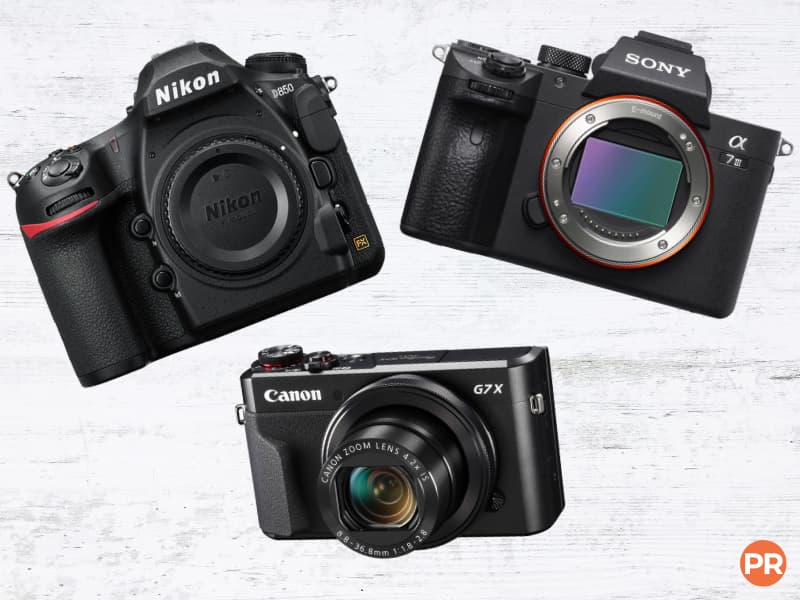
Digital SLR, mirrorless, and point-and-shoot are the three types of digital cameras. The following covers the differences and compares them.
Mirrorless cameras
The main competitor of a digital SLR is the mirrorless camera.
Many professional photographers are switching to mirrorless systems for speed and quality.
Mirrorless cameras are lighter and smaller, as there’s no mirror or prism.
They also have an electronic viewfinder. So, the image you see is what you get. It leads to better accuracy for focusing and exposure.
Another advantage is the electronic shutter allows for a faster burst rate. It also means a longer lifespan for the camera.
A digital SLR has a few advantages over a mirrorless camera.
It has a longer battery life, and beginners have more choices at lower prices.
Since DSLR cameras are older, there are more options for lenses.
Despite the benefits, brands and photographers continue to move towards mirrorless cameras.
Point-and-shoot cameras
Point-and-shoot cameras are excellent for beginners and hobby photographers.
They’re small, light, and quick. They also have built-in zoom lenses and flash.
Also, most are inexpensive when you compare prices with DSLR cameras.
A digital SLR camera is a better choice for professional photography.
It has more shooting modes, better image quality, dynamic range, and performance.
Frequently asked questions about digital SLR cameras
How do I know if my camera is a DSLR?
The best way to see if you have a DSLR camera is to search for the model name online. Also, you can check for a film compartment. It’s a distinguishable feature when comparing DSLR and SLR cameras. A removable lens also sets it apart from point-and-shoot cameras.
Why is a DSLR better than a phone camera?
Many DSLR cameras have higher resolution, better video, and low-light performance. The ISO range is also better than most phone cameras.
How many shots can a DSLR take?
The shutter count of a digital SLR varies by camera. Most entry and mid-tier DSLRs can take around 150,000 photos. A professional digital SLR may be able to handle 300,000.
Conclusion
Mirrorless cameras are growing in popularity, but DSLR cameras are still worth buying.
They offer a longer battery life and a wide selection of lenses.
Also, they have larger bodies, making ergonomics and handling more comfortable.
A DSLR camera can be an excellent choice for all budgets and types of photography.
Beginners and professionals alike can capture high-quality photos with one.
Related: The Best Lightroom Export Settings for Instagram
Featured photo courtesy of Unsplash.
